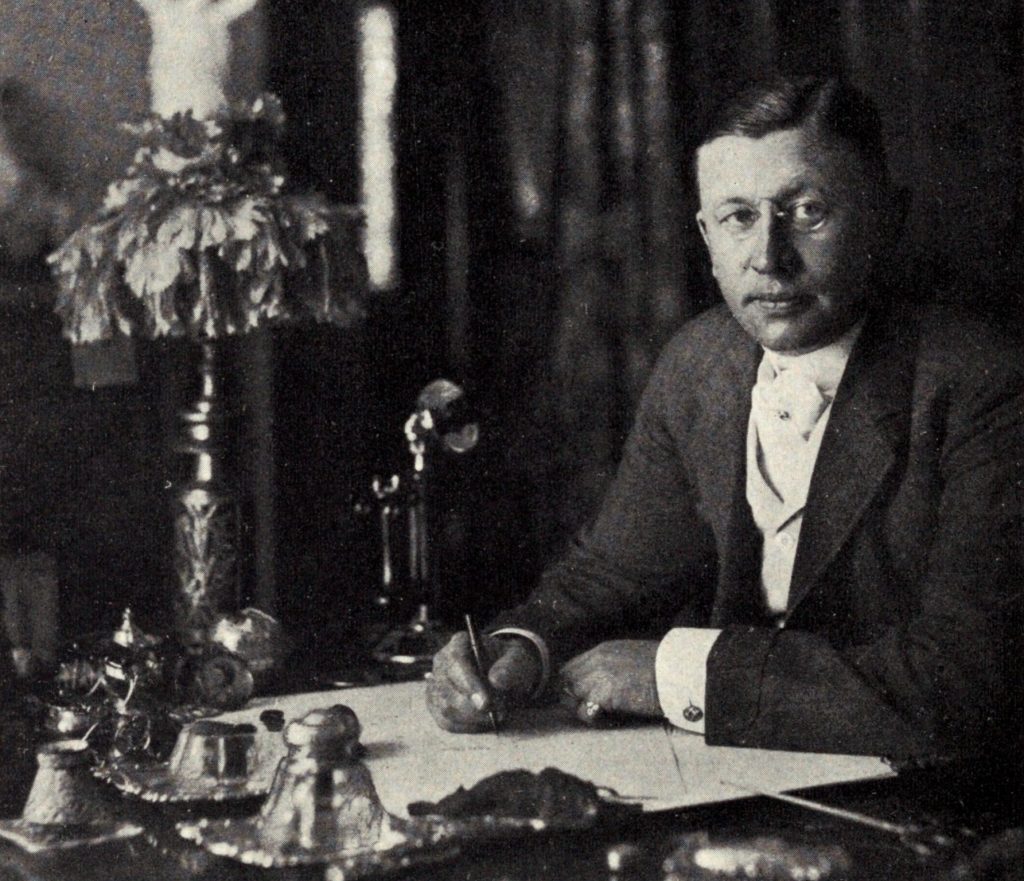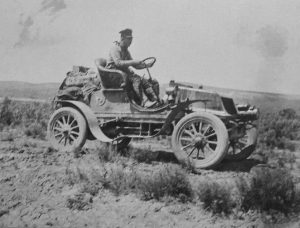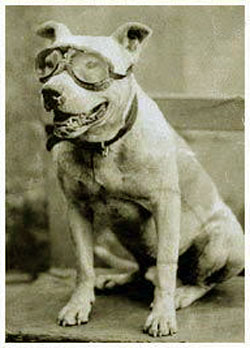In 1983, Chevy Chase and the Griswold family packed up the “Family Truckster” station wagon, for the first of seven films about cross country vacations. In the 20th century, the summer road trip became a ritual in Europe and North America as families took to the highways that connected towns, beaches and even “Wally World.”
In the early part of the 20th century, America’s roads were more like trails with ruts. Sometimes they were merely dry riverbeds. Other times there was no path at all – only vast fields, rivers and the mountains to guide an adventurous soul. Despite these challenges, automobiles were growing in popularity.

In 1903, Dr. Horatio Nelson Jackson single handedly silenced a conversation taking place at the San Francisco University Club. “Fifty dollars says I can drive a car to New York.” This was quite a boast for a man without a car or mechanical knowledge. Yet the young retired doctor, along with a mechanical assistant and a dog, took up the challenge with only four days to purchase a car and a pack.
2005 Automotive Hall of Fame inductee Alexander Winton’s Winton Six Motor Carriage – introduced in Cleveland Ohio in 1898 – had earned a reputation as stout, reliable early motorcar, leading Sewall Crocker, Jackson’s mechanic to recommend its purchase for the trip.
The team picked out a used ruby red Winton Six. It was a spartan rig with a couple of brass lanterns, a bulb type horn, and a steering wheel on the right-hand side. It did not have a windshield, canopy or cupholders. The vehicle already had 1,000 miles on it, a substantial number given the few roads available for travel in the early 20th century.
Crossing rivers without bridges required a block and tackle system to pull the vehicle to the far shore. Despite being buried above the axles in Wyoming mud and lost for days on, Jackson’s surviving love letters to his wife testify to his enduring pluck and optimism and document his confidence throughout the months of the crossing.

Jackson and Crocker removed the back seat and packed sleeping bags, cooking utensils, and a single spare tire. This was the only spare they could find before their May 23 departure. The rather naive team pressed into the unknown, and only fifteen miles into their travels, the spare tire was called into service. In fact, the team blew through dozens of early pneumatic tires over the next few months. Ahead, lay months of repairing tires and waiting for mechanical parts delivered by train or by horse-drawn coaches.
Jackson, Crocker and Bud the dog were not alone in their quest to cross America. Two other competitors were gaining on them. They were competing against a team sponsored by the Packard Motor Company and another team featuring a Runabout Oldsmobile.
Newspapers latched onto the story of the unofficial race across America as the team neared the Mississippi River. Jackson’s can-do attitude caused him to turn down a mid-journey offer of support from the Winton Motorcar Company.
These competitors endured trials on trails that no motorized vehicle had ever traveled. Sixty-three days, 5,600 miles and $8,000 later, Jackson drove into New York City, becoming the first person to cross the United States in an automobile.

Jackson never bothered to collect on his $50 wager; achieving the impossible was enough for him. Others would soon follow the path blazed by the Winton Six Motor Carriage, Jackson, Crocker, and a pitbull named Bud.
This journey proved the continent could be crossed by an automobile and laid the groundwork for the development of a national plan to improve the nation’s roads.
Ultimately, President Woodrow Wilson signed into law the Federal Aid Highway Act of 1916 to speed the development of America’s transcontinental road system. President Dwight Eisenhower followed in 1956 when he signed the Federal Highway Act to construct the high-speed and defense road system of the United States.
Today, the U.S. highway system consists of 46,000 miles of Interstate.
Enjoy your summer road trip and smile when you think of the Griswolds. And while you’re at it, thank the Winton Six, Jackson, Crocker, and Bud for making it possible.